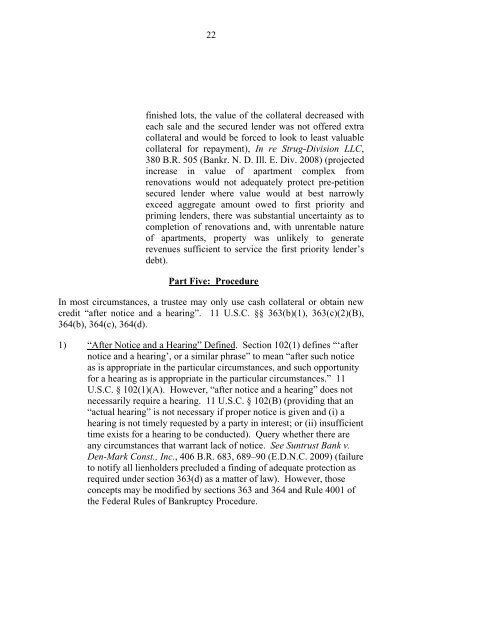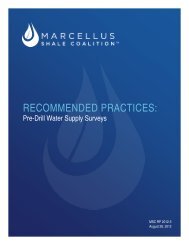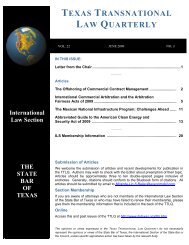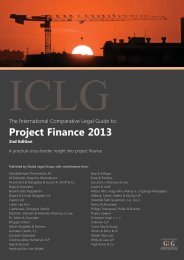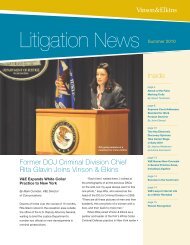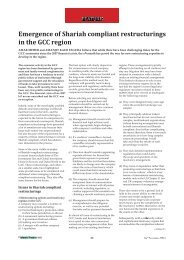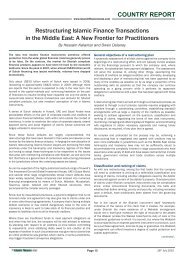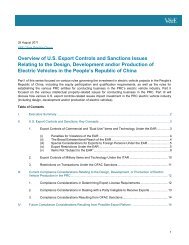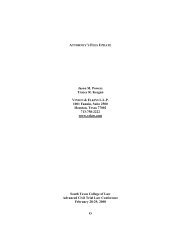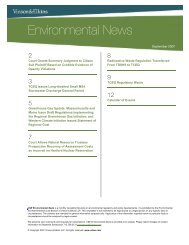12 AN INTRODUCTION TO DIP FINANCING Jane Lee
12 AN INTRODUCTION TO DIP FINANCING Jane Lee
12 AN INTRODUCTION TO DIP FINANCING Jane Lee
You also want an ePaper? Increase the reach of your titles
YUMPU automatically turns print PDFs into web optimized ePapers that Google loves.
22<br />
finished lots, the value of the collateral decreased with<br />
each sale and the secured lender was not offered extra<br />
collateral and would be forced to look to least valuable<br />
collateral for repayment), In re Strug-Division LLC,<br />
380 B.R. 505 (Bankr. N. D. Ill. E. Div. 2008) (projected<br />
increase in value of apartment complex from<br />
renovations would not adequately protect pre-petition<br />
secured lender where value would at best narrowly<br />
exceed aggregate amount owed to first priority and<br />
priming lenders, there was substantial uncertainty as to<br />
completion of renovations and, with unrentable nature<br />
of apartments, property was unlikely to generate<br />
revenues sufficient to service the first priority lender’s<br />
debt).<br />
Part Five: Procedure<br />
In most circumstances, a trustee may only use cash collateral or obtain new<br />
credit “after notice and a hearing”. 11 U.S.C. §§ 363(b)(1), 363(c)(2)(B),<br />
364(b), 364(c), 364(d).<br />
1) “After Notice and a Hearing” Defined. Section 102(1) defines “‘after<br />
notice and a hearing’, or a similar phrase” to mean “after such notice<br />
as is appropriate in the particular circumstances, and such opportunity<br />
for a hearing as is appropriate in the particular circumstances.” 11<br />
U.S.C. § 102(1)(A). However, “after notice and a hearing” does not<br />
necessarily require a hearing. 11 U.S.C. § 102(B) (providing that an<br />
“actual hearing” is not necessary if proper notice is given and (i) a<br />
hearing is not timely requested by a party in interest; or (ii) insufficient<br />
time exists for a hearing to be conducted). Query whether there are<br />
any circumstances that warrant lack of notice. See Suntrust Bank v.<br />
Den-Mark Const., Inc., 406 B.R. 683, 689–90 (E.D.N.C. 2009) (failure<br />
to notify all lienholders precluded a finding of adequate protection as<br />
required under section 363(d) as a matter of law). However, those<br />
concepts may be modified by sections 363 and 364 and Rule 4001 of<br />
the Federal Rules of Bankruptcy Procedure.


